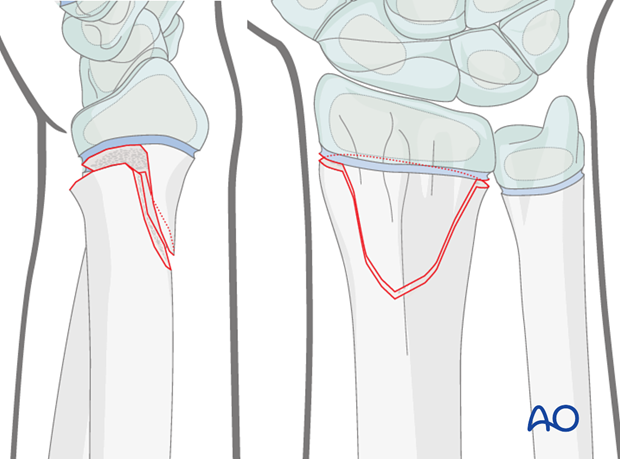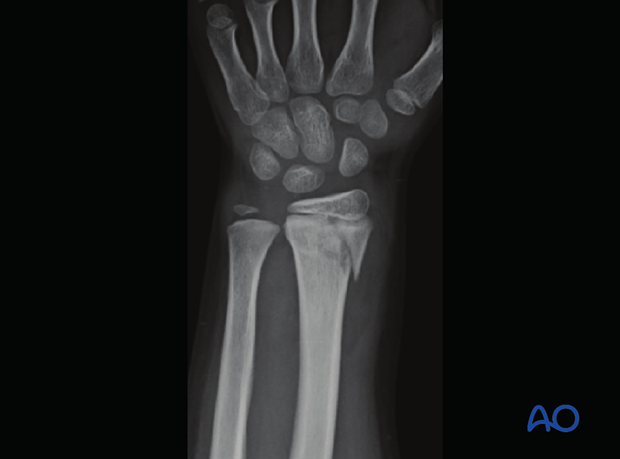23r-E/2.1 Simple epiphysiolysis with metaphyseal wedge, Salter-Harris II, radius
This is a common fracture that is usually caused by a fall onto an outstretched hand.
This fracture is associated with local tenderness over the distal radius. Local swelling is usual. Visible deformity is often present; this is usually a posterior translation if the metaphyseal fragment is lateral, but when the metaphyseal fragment is posterior, then posterior angulation occurs.
Note: Be aware of nonaccidental injury in infants with a very subtle metaphyseal component.

X-ray shows a complete fracture, direction of displacement, and size of the metaphyseal fragment.














